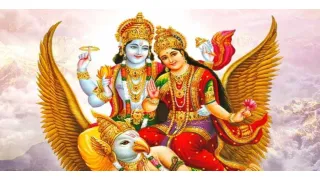Navratri, a vibrant and spiritually enriching festival dedicated to Goddess Durga, is celebrated with deep devotion across India. This nine-day festival symbolizes the victory of good over evil and is a time for reflection, devotion, and joy. Millions of devotees worldwide observe Navratri through fasting, prayer, and celebration, worshipping different forms of Goddess Durga each day. In 2024, Navratri begins on Thursday, October 3, and concludes on Saturday, October 12.
Each day of Navratri is marked by the worship of a specific form of Goddess Durga, and the colours worn on these days carry their significance, symbolizing the divine qualities of the goddess. Let’s explore the importance and rituals of each day of Navratri 2024, along with the colours associated with these days.
Navratri 2024: Durga Puja 9 Days Calendar
Day 1: Thursday, October 3, 2024

Image Source: Twitter
Tithi: Pratipada
Puja: Ghatasthapana, Shailputri Puja
Navratri begins with the Ghatasthapana, a sacred ritual that involves setting up a Kalash (sacred pot) symbolizing the presence of the goddess. On this day, devotees worship Goddess Shailputri, the first manifestation of Goddess Durga. Shailputri represents the strength and wisdom of the divine. Devotees wear yellow, a colour representing joy and positive energy, to mark the beginning of the festival.
Day 2: Friday, October 4, 2024

Image Source: Twitter
Tithi: Dwitiya
Puja: Chandra Darshana, Brahmacharini Puja
The second day is dedicated to Goddess Brahmacharini, who symbolizes devotion, peace, and austerity. It is believed that worshipping her brings peace and happiness. Devotees also observe Chandra Darshana, the sighting of the moon, which holds special significance. green symbolises growth, renewal, and harmony.
Day 3: Saturday, October 5, 2024

Image Source: Twitter
Tithi: Tritiya
Puja: Sindoor Tritiya, Chandraghanta Puja
On the third day, devotees worship Goddess Chandraghanta, known for her warrior spirit and courage. The day is also marked by the Sindoor Tritiya ritual, which symbolizes the strength and auspiciousness of married women. Grey is worn on this day, symbolizing balance, calmness, and the ability to face challenges with composure.
Day 4: Sunday, October 6, 2024

Image Source: Twitter
Tithi: Chaturthi
Puja: Vinayaka Chaturthi, Kushmanda Puja
On this day, prayers are offered to Lord Ganesha during Vinayaka Chaturthi to seek his blessings for success. Goddess Kushmanda, who brings light, warmth, and positivity, is also worshipped. Devotees wear orange, representing enthusiasm, vibrancy, and warmth, to invoke the goddess's blessings for energy and vitality.
Day 5: Monday, October 7, 2024

Image Source: Twitter
Tithi: Panchami
Puja: Kushmanda Puja, Upang Lalita Vrat
The fifth day is focused on Goddess Kushmanda, the creator of the universe, who brings happiness and prosperity. Devotees observe the Upang Lalita Vrat to seek her blessings for harmony and peace. The colour white is worn on this day, symbolizing purity, calmness, and serenity.
Day 6: Tuesday, October 8, 2024

Image Source: Twitter
Tithi: Shashthi
Puja: Skandamata Puja
Goddess Skandamata, the mother of Lord Kartikeya, is worshipped on the sixth day of Navratri. She represents motherly love, protection, and compassion. Devotees wear red, a colour of passion and strength, to honour the goddess and seek her blessings for courage and prosperity.
Day 7: Wednesday, October 9, 2024

Image Source: Twitter
Tithi: Saptami
Puja: Saraswati Avahan, Katyayani Puja
On the seventh day, devotees invoke Goddess Saraswati for wisdom and creativity through Saraswati Avahan. Goddess Katyayani, a powerful warrior deity, is also worshipped on this day for courage and strength. The colour royal blue, representing wisdom, stability, and depth, is worn to connect with the divine energy of the goddess.
Day 8: Thursday, October 10, 2024

Image Source: Twitter
Tithi: Ashtami
Puja: Saraswati Puja, Kalaratri Puja
The eighth day, known as Durga Ashtami, is one of the most significant days of Navratri. Goddess Kalaratri, a fierce and powerful form of Durga, is worshipped to remove negativity and eliminate darkness. Devotees wear pink, a colour that represents love, affection, and feminine power, as they seek the goddess's blessings for protection and purification.
Day 9: Friday, October 11, 2024

Image Source: Twitter
Tithi: Navami
Puja: Durga Ashtami, Mahagauri Puja, Sandhi Puja
The final day of Navratri, Navami, is dedicated to Goddess Mahagauri, who symbolizes purity and tranquillity. The Sandhi Puja, performed at the juncture of Ashtami and Navami, is a key ritual that signifies the power of transformation and spiritual growth. Purple, symbolizing spirituality, transformation, and devotion, is worn on this day as devotees pray for divine grace and blessings.
Also Read: Durga Puja 2024: Dates, Rituals, Timings, and Significance

































